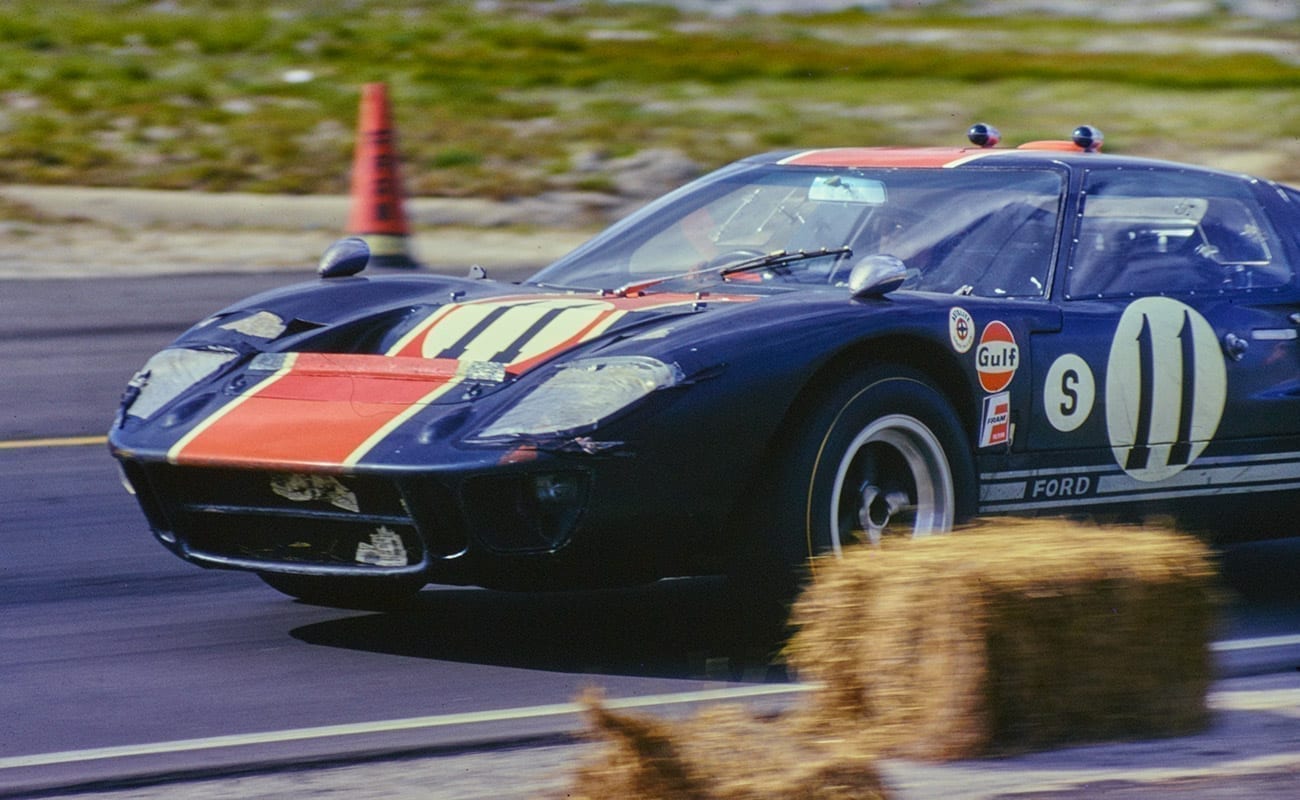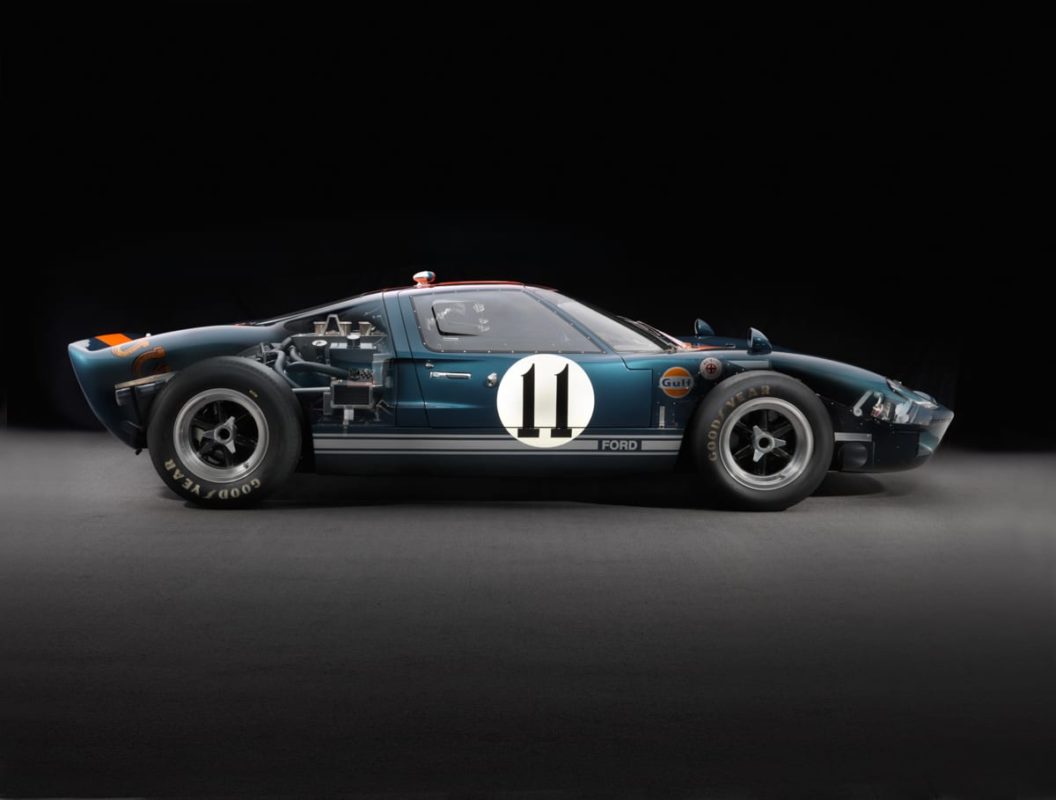Tech Specs
Eight-cylinder 90° vee pushrod engine, four twin-choke Weber carburetors, wet sump lubrication, 4736 cc (289 cubic inches), 390 hp at 7000 rpm.
Before/After
1966 Ford


About the 1966 Ford GT40 MKI
The Ford GT40 was the car that brought Le Mans to America’s consciousness…and victory in the French classic to Dearborn. With a performance image the aim, Henry Ford II approached Ferrari in early 1963. His overtures of financial partnership spurned, Henry II decided if Ferrari couldn’t be bought, he would be beaten – by a Ford. Cost no object.
By October a task force staffed by the Who’s Who of Anglo-American racing had been assembled. The plan called for testing Le Mans’ waters in 1964 and winning the race in 1965. It didn’t work out that way. While Ford’s new prototype was fast, setting top time at Le Mans, it failed to go the distance at any race its first season. With Carroll Shelby’s help, Daytona 1965 brought the GT40’s first victory, but Ford’s unrealistic p.r.-driven expectations had turned to disillusionment. The 289-cubic-inch GT40 just didn’t have what it took to win, Dearborn said. Hence a new, more expensive plan: create the Mark II, a GT40 stuffed like a Strasbourg goose with a 427-cubic-inch V-8. In 1965, Phil Hill’s MK II turned Le Mans’ fastest lap but, like 1964, the team retired en masse. Bloodied, Ford was in too deep to quit. Dearborn returned in 1966 with eight factory MK IIs and five independently entered GT40s. Crushed by the Ford “steamroller,” Ferrari’s P-3s gave best to a one-two-three Ford MK II victory. To prove it wasn’t just luck, Ford entered yet another new car in 1967, the MK IV. Again Ford won the 24-hour race…and instantly announced retirement from the field.
The display car has a special place in the history of GT40s at Le Mans. In 1967 owner Grady Davis, a Gulf Oil vice-president, decided to capitalize on international racing’s advertising potential through Gulf sponsorship of a team of lightweight GT40 derived “Mirage” prototypes, to be managed by small- block GT40 proponent John Wyer, who had masterminded Aston Martin’s 1959 victory at Le Mans. Gulf’s efforts were ultimately rewarded by Le Mans wins in 1968 and 1969 with 289-cubic-inch GT40s, effectively making a nonsense of Dearborn’s big-block theory. In preparation for the 1967 season, Davis’ road car was race prepared as a Gulf entry for the Daytona 24-hour (6th, Ickx/Thompson) and the Sebring 12-hour (d.n.f. Thompson/Lowther) races.
Photos – Peter Harholdt












